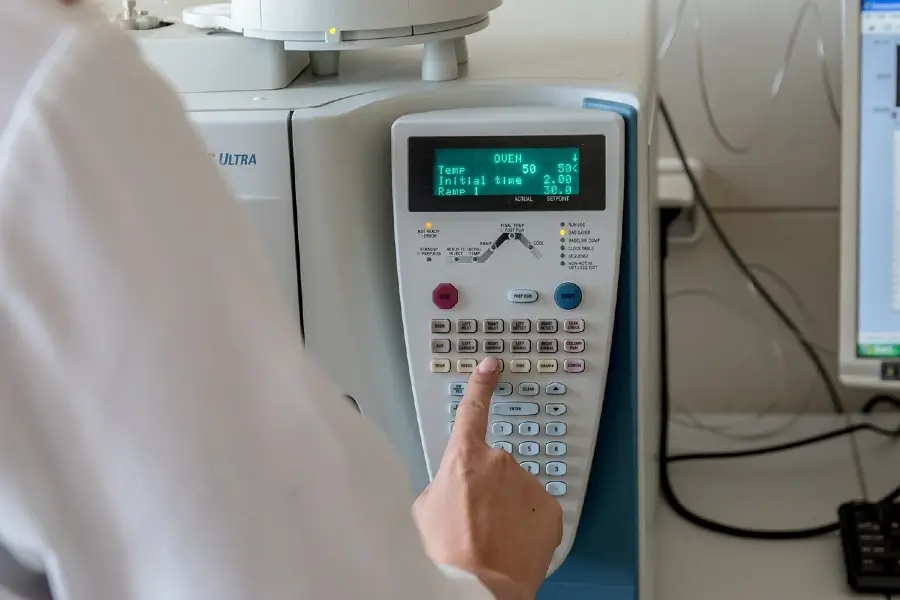Pediatric acute myeloid leukemia (AML) is a cancerous condition marked by the overproduction of abnormal blood cells in the bone marrow. The defective cells cannot carry out their activities efficiently and can displace healthy blood cells, leading to various symptoms and consequences.
Here are some essential facts about juvenile acute myeloid leukemia (AML):
- This particular form of juvenile leukemia is the second most common, accounting for approximately 20% of all instances.
- The average age for diagnosis is typically seven years old, and the median age is in terms of age distribution.
- Males exhibit a slightly greater propensity for acquiring acute myeloid leukemia (AML) in comparison to females.
- The approximate 5-year survival rate is approximately 70%.
Contributing factors and potential risks:
The cause of pediatric AML is yet unknown, although several risk factors can increase a child’s likelihood of getting the condition. The following items are provided:
Genetic factors: Some children have genetic mutations that make them more susceptible to AML.
Exposure to radiation or chemotherapy can cause DNA damage in blood cells, hence increasing the risk of developing cancer.
Down syndrome: Children with Down syndrome have a higher likelihood of developing acute myeloid leukemia (AML).
Specific medical disorders: While the exact origins of AML are not fully understood, certain medical conditions have been identified as potential risk factors for the onset of this disease.
Neurofibromatosis is a medical condition that has been linked to an increased risk of developing AML.
An instance of such a disorder is Fanconi anemia, a rare genetic condition that hinders the body’s ability to repair damaged DNA. Individuals suffering from this condition have an increased vulnerability to developing Acute Myeloid Leukemia (AML), as well as other types of cancer.
Neurofibromatosis is a medical condition that has been linked to an increased risk of developing AML. This is an inherited disorder that affects the nervous system and causes the formation of tumors along the nerves. While the tumors associated with neurofibromatosis are usually benign, individuals with this condition have a heightened vulnerability to developing acute myeloid leukemia (AML) and other types of cancer.
Moreover, several risk factors can increase the likelihood of developing AML in addition to these particular medical conditions. These factors include exposure to specific compounds, such as benzene, and a previous medical history of radiation therapy or chemotherapy. Age is a significant issue, as AML is more common in the senior population.
While it may not always be possible to prevent the occurrence of AML, being aware of these risk factors can empower individuals to take steps to reduce their risk. This may entail reducing exposure to harmful substances, following a well-rounded and healthy lifestyle, and regularly scheduling appointments with a healthcare provider.
The clinical symptoms of pediatric acute myeloid leukemia (AML) might vary depending on the severity of the disease.
Effective monitoring and prompt detection are essential in managing AML for individuals with specific medical conditions that increase their vulnerability to the disease.
Usage:
The clinical symptoms of pediatric acute myeloid leukemia (AML) might vary depending on the severity of the disease. Common presentations include:
Fatigue Weakness Pallor Petechiae, also known as little, red patches on the skin, are characterized by their minuscule size. The presence of large, violet-colored bruises on the skin characterizes Purpura.
Bleeding excessively Elevated body temperature Microbial invasions
Medical evaluation:
The diagnosis of pediatric acute myeloid leukemia (AML) is established with a comprehensive battery of testing, which may encompass:
The Complete Blood Count (CBC) is a diagnostic test that measures and classifies the many types of blood cells.
Procedure for obtaining a sample of bone marrow tissue: This method receives a small sample of bone marrow for microscopic examination.
Flow cytometry is a diagnostic technique employed to identify the precise subtype of leukemia cells that are present.
Cytogenetic analysis is a diagnostic method that seeks to identify any deviations or abnormalities in the structure or quantity of chromosomes in the bone marrow cells. Flow cytometry is a diagnostic technique employed to identify the precise subtype of leukemia cells that are present.
Treatment approach:
The care of juvenile acute myeloid leukemia (AML) depends on several factors, including the child’s age, the exact subtype of AML, and the degree of disease advancement. Standard therapeutic approaches include:
Chemotherapy is the primary treatment method for Acute Myeloid Leukemia (AML). It utilizes powerful drugs to eliminate cancer cells. A stem cell transplant is a medical procedure that replaces a child’s bone marrow with healthy bone marrow acquired from a donor.
Targeted therapy utilizes drugs that directly target and address mutations found in cancer cells.
Radiation therapy utilizes ionizing radiation to eliminate cancerous cells.
Prediction:
In recent years, the outlook for children diagnosed with acute myeloid leukemia (AML) has significantly improved. The current 5-year survival rate is approximately 70%. However, the prognosis may vary depending on factors such as the child’s age, the exact subtype of AML, and the severity of the disease.
Additional resources:
The National Cancer Institute: https://www.cancer.org/cancer/types/acute-myeloid-leukemia.html
The Leukemia & Lymphoma Society: https://www.lls.org/leukemia/acute-myeloid-leukemia/childhood-aml
The Mayo Clinic: https://www.cancer.gov/types/leukemia/hp/child-aml-therapy
It is imperative to recognize that this material should not be utilized as a substitute for expert medical advice. If you have any issues or concerns about pediatric AML, please visit your child’s physician.

Dominic E. is a passionate filmmaker navigating the exciting intersection of art and science. By day, he delves into the complexities of the human body as a full-time medical writer, meticulously translating intricate medical concepts into accessible and engaging narratives. By night, he explores the boundless realm of cinematic storytelling, crafting narratives that evoke emotion and challenge perspectives. Film Student and Full-time Medical Writer for ContentVendor.com




